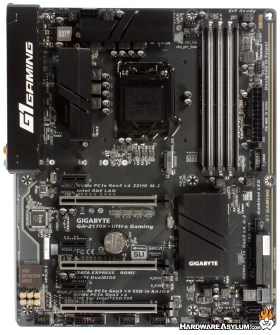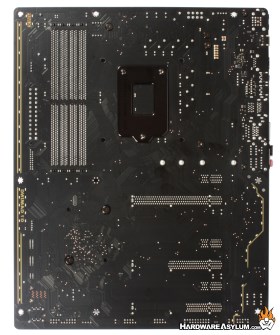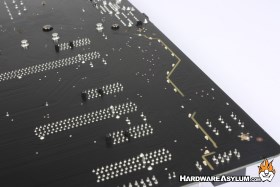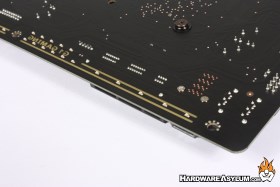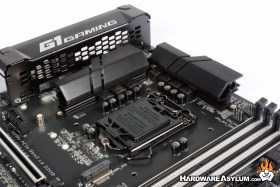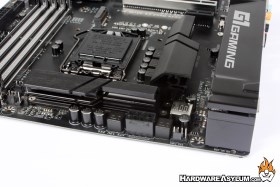Gigabyte Z170X Ultra Gaming Motherboard Review
Author: Dennis GarciaBoard Layout and Features
Motherboard makers will often experiment with different color combinations and try to anticipate what the market demands will be. For instance, some companies sell a majority of their products in China and will include gold accents whenever they can. Others market their products to gamers who seem to like Black and Red. I’m not going to say that motherboard color schemes are what drive sales however “curb appeal” can go a long way.
The Z170X-Ultra Gaming breaks the mold and goes with the familiar, and yet never used, Black. Or Black on black assuming you want to consider Black as somehow different from black.
Flipping a motherboard over can tell you a lot about its construction including the location of chipsets and what PCI Express slots are primary and secondary in terms of bandwidth. This motherboard features a handful of surface mounted components including some resistors in the upper right and some solder pads where the M.2 mounting screws attach to the PCB.
Scattered around the PCB you will find a good number of surface mount LEDs. Normally these just illuminate the void near the audio controller but you will also find them on the opposite side near a rather long void in the PCB.
As you may have guessed this board has underglow and isn’t afraid to show it.
Moving to the CPU we can see the dark chrome CPU socket hardware positioned next to the array of PWM components. One of the first things to be downsized on a mainstream motherboard is the size of the power delivery system and the Z170X-Ultra Gaming is quite small with a total of 7 power phases for the different CPU components and video. Most Gigabyte motherboards are using the new PowIRstages and when combined with their 2oz copper PCB can supply more power to the CPU, with less heat and better efficiency. While 21 phases would be 3x more impressive the smaller number of traces can help with signal integrity and stability at high frequencies.
Behind the PWM cooler you'll find the CPU Power connection made up of a single 8-pin connector. Given the location the cables they should be easy to hide in any modern chassis and easy to remove given the space between the power plug and I/O panel.

